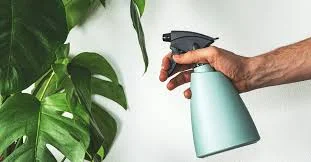Chandigarh, September 24: Indoor gardening has become a popular hobby across urban households, with people turning to potted plants to bring a touch of green into their homes. While these plants add beauty, fresh air, and positivity, they can also attract unwanted guests—pests such as aphids, spider mites, mealybugs, and fungus gnats. Experts suggest that keeping indoor plants free from bugs requires a mix of vigilance, prevention, and natural remedies.
Plant care specialists note that the most common reason pests thrive indoors is the lack of natural predators that typically keep their populations under control outdoors. In a closed environment, these insects can multiply rapidly, damaging leaves and roots. “Prevention is always better than cure,” says a Delhi-based horticulturist. “If you develop a routine of inspecting plants, cleaning them, and ensuring proper conditions, you can avoid most infestations.”
The first step, experts emphasize, is regular monitoring. Checking both sides of the leaves once or twice a week helps spot early signs of trouble. Sticky residues, tiny webbing, or discolored spots often point to pest activity. Wiping leaves with a soft damp cloth not only removes dust but also dislodges small insects before they spread. For delicate plants, a gentle spray of water can achieve the same effect.
Overwatering is one of the biggest culprits behind pest issues. Excess moisture creates a breeding ground for fungus gnats and mold. Gardeners recommend watering only when the soil surface feels dry and ensuring that pots have drainage holes. Equally important is air circulation—keeping plants too close together in corners allows humidity to build up. Placing them where fresh air moves freely reduces the risk of fungal and insect problems.
For households worried about chemical sprays, natural solutions are widely available. Neem oil, diluted in water and sprayed on leaves, is a proven deterrent against many pests. Soap sprays, made with mild liquid soap, can suffocate soft-bodied insects like aphids and mealybugs. Some gardeners even release beneficial insects such as ladybugs indoors, though this practice is less common. “Natural remedies are safe, inexpensive, and effective when used regularly,” says a Bangalore-based plant nursery owner.
Bringing home a new plant is often when pests enter an otherwise healthy collection. Specialists advise keeping new plants separate for at least two weeks before placing them with others. This “quarantine” period allows time to detect hidden infestations. Replacing or sterilizing soil also plays a key role, as old soil may harbor eggs and larvae. Using clean pots and fresh potting mix minimizes this risk.
While dealing with pests is part of gardening, experts caution against overreacting. A few insects may not cause significant harm and can be managed with simple cleaning. The key lies in balance—providing plants with the right conditions while staying alert to changes.
Indoor gardening enthusiasts agree that the effort pays off. With healthy, pest-free plants, homes not only look greener but also feel fresher and more inviting.

